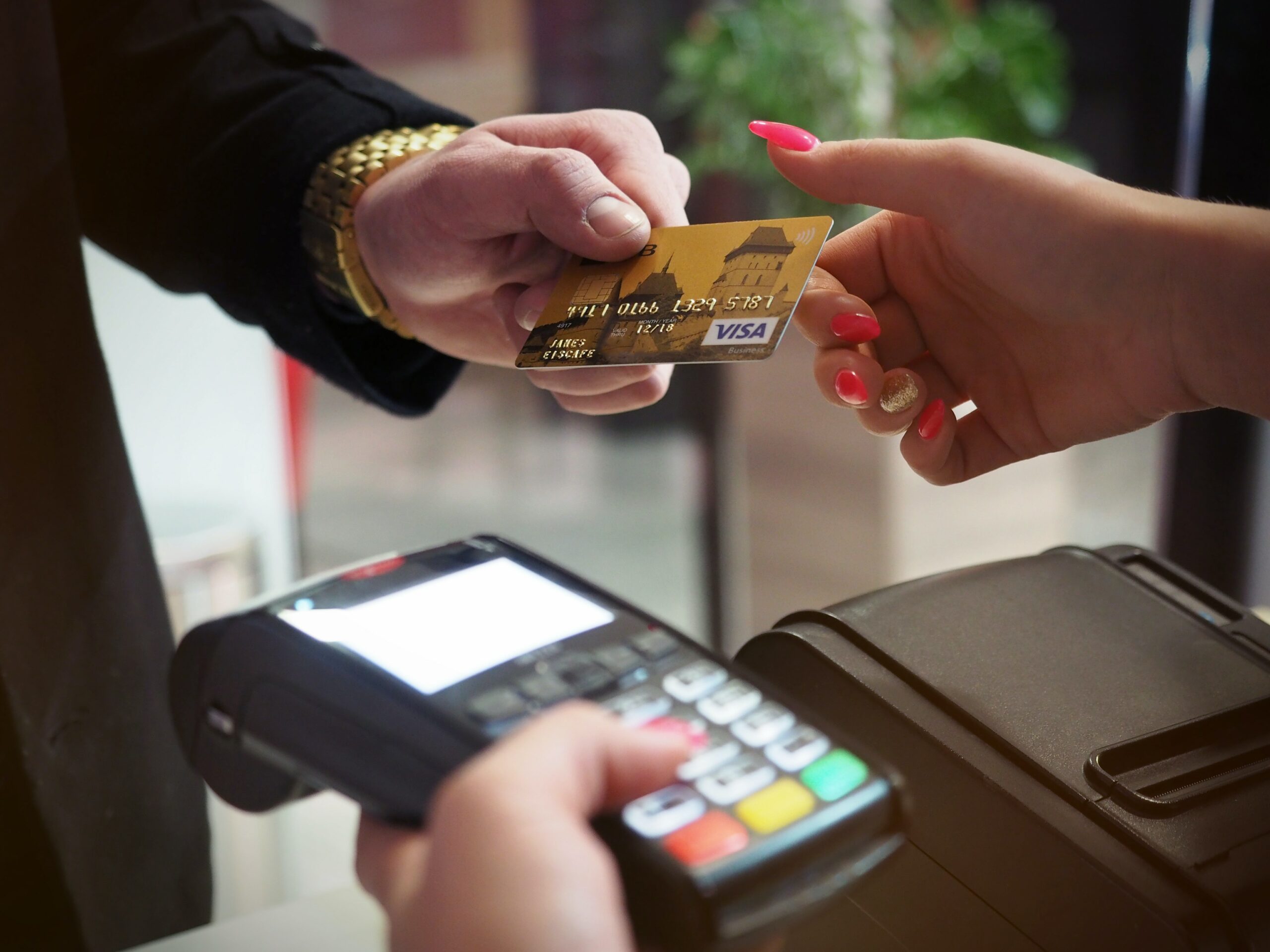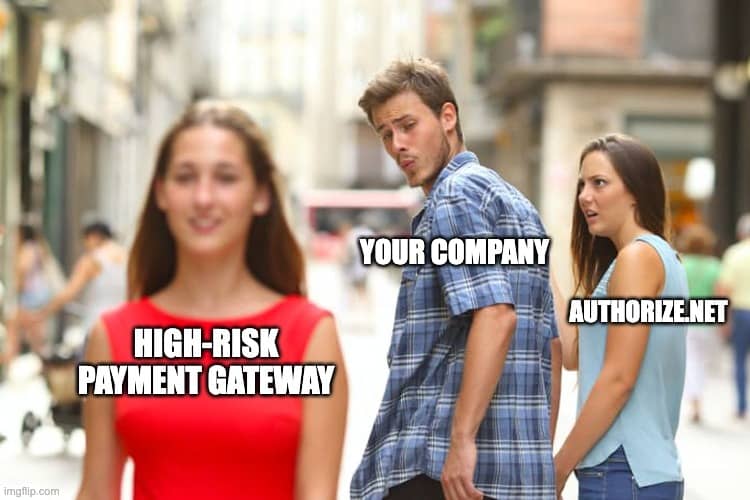Invalid MID: What Does Invalid Merchant ID Mean?

Processing errors are a nuisance. They’re guaranteed to happen in business, but the Invalid MID payment processing error may be a head-scratcher. Invalid merchant ID?
You may wonder if you forgot to pay the bill for your merchant account, if your payment API was disconnected, or if a customer is attempting a fraudulent purchase. What now? What does invalid merchant ID mean?
Sadly, payment processing can be overflowing with issues, most of which:
- Have nothing to do with you or your business
- Could be due to customer negligence, such as a payment decline for insufficient funds
- Are controlled by the bank responsible for the customer’s card
Despite paying your bills on time and maintaining your business well, credit card processing error codes are still often out of your control.
It can be frustrating in the moment when credit card transactions get declined. That’s why a good rule of thumb is to always ask the customer to call the phone number of the card-issuing bank to see if they can get any info regarding the validation error or declined authorization. Sometimes it’s something as simple as:
- They’ve traveled outside their typical region.
- They’re using an expired card and forgot to put the new one in their wallet.
- They’re using a card type the business doesn’t accept (businesses have the right to choose the card issuers they’ll accept payments from, such as AMEX , Visa, or Mastercard)
- The card doesn’t have enough money on it (insufficient funds).
- They’ve spent more than their credit limit.
In other cases, it’s something more complicated, such as the card getting blocked or the card issuer (or the real cardholder) suspects fraud and locks the card.
But sometimes, you may see a payment process error code that is within your control. The good news? If you see an “invalid merchant ID” code pop up on your terminal, it is an error code you can control. So what does invalid merchant ID mean?
If your terminal or payment gateway shows an invalid merchant ID, it’s a sign that you may need to reset your terminal. If this doesn’t help, reconfiguring your terminal may help. If you need assistance, reach out to your merchant account provider.
If your business experiences a period of extended downtime for an invalid merchant ID error code, you may want to start looking for a new merchant account. Zenti’s services offer the expertise you need in a merchant account provider, ensuring you’re not missing out on valuable sales from an invalid merchant ID error.
Below you can learn more about invalid merchant ID errors, other common errors and codes, and other questions or issues you may have.
What’s a Merchant ID?
Even if you’ve owned your business for years, when a code stops a purchase in its tracks, it’s normal to feel queasy in the pit of your stomach: all the things that could go wrong — Murphy’s law and all.
Your Merchant ID, however, is a “code” that you should always feel comfortable with — especially if you’ve got an experienced merchant account provider in your corner.
After applying for a business merchant account, your payment processor assigns you a Merchant ID, also known as a merchant identification number, merchant ID number, or simply MID. Your MID is a number unique to your business, allowing you to process credit and debit card payments from customers. The payment gateway uses your Merchant ID to authenticate your merchant account.
The gateway verifies that your Merchant ID is:
- Currently active
- Legally obtained
Once authentication is complete — a process that takes mere fractions of seconds — the gateway processes the payment, and funds are sent to your merchant account. Essentially, your Merchant ID acts like your business’s checking account routing and account numbers or as a credit card number. Every business and company has a unique MID; your merchant identification number isn’t public — it’s not in any searchable database. It is private between you and your merchant account provider.
How to get your merchant identification number
Getting your merchant ID requires applying to a merchant account provider and completing the steps to verify that you own a legitimate and legally abiding business.
If you operate a business in a high-risk industry, such as adult entertainment, payday loans, or debt collections, a traditional merchant account provider might deny your application. Applying for a high-risk merchant account with Zenti offers additional protections even if you don’t perform risky transactions.
Having a high-risk merchant account will provide your business with more transactional safety, but it doesn’t mean you won’t ever see an invalid merchant ID code on your terminal. At Zenti, we can help you remedy the situation and get your business back to processing payments quickly. In addition to wondering, “what does invalid merchant ID mean?” you may have seen other declined card codes and wondered, what does that code mean? And why did it happen?
Why your terminal shows credit card declined codes
When you see a declined card code, you may not know its exact meaning at the moment, but a credit card declined code always means one thing — you couldn’t process the payment. This may lead you to wonder:
- At what stage of the invalid transaction did the decline occur?
- Why did it happen?
- What information is your terminal displaying? What does the error code mean?
- What if it indicates an invalid merchant ID?
- What does invalid merchant ID mean?
A card declined code can be issued by the payment processor, the gateway, or — 99.9% of the time — the bank that issued the card. Once a card gets declined, you’ll see a card declined code on your terminal with a corresponding error message.
Payment processing systems assign codes to relevant transactions while displaying a short explanation of the code. Causes can range from a technical glitch at the card-issuing institution, a misconfigured terminal in your business, or a customer simply not having enough money on their card to cover the purchase.
Are there different types of credit card declines?
As a merchant who accepts credit and debit card payments, you’re bound to come in contact with different types of card declines. Most payment processing terms are relatively self-explanatory, such as these next two. There are two types of credit and debit card declines you will need to be familiar with:
- A soft decline. A soft decline occurs when the customer’s card issuer approves the payment, but the transaction is declined somewhere in the “conversation” between your terminal, the issuer, and the gateway. Having the customer swipe or insert their chip card again and retrying the card for payment typically resolves a soft decline.
- A hard decline. Hard declines, on the other hand, occur when the card issuer denies the transaction. In these situations, if the customer attempts the purchase a second time, it can get their card locked by the issuer, as well as present problems for you with your merchant provider - especially if you don’t have a high-risk merchant account. A customer must call the card company or issuing bank to correct a hard decline.
A hard decline is also known as a 05-decline code. This decline code happens more often than any other. If your terminal shows a 05-decline code, you’ll also see a Do Not Honor reply, a message often used among card issuers to specify declined transactions.
If the card issuer sends a 05-decline code, there is nothing you can do. But will you jeopardize your merchant account if you retry a payment that’s just received a hard decline? It depends.
It won’t cause your terminal to reflect an invalid merchant ID code, but it’s best to ask the customer to use another payment method or wait at least 24 hours before attempting to rerun the same card.
Rerunning an issuer-blocked card can present future issues with payment disputes and potential chargebacks. This kind of activity on your bank account may even prompt your merchant account provider to ask you to submit a personal guarantee.
Are you allowed to have more than one merchant ID number?
You may require more than one merchant ID number if you have several businesses and each business is in a completely different industry. But typically, most establishments only need a single merchant identification number or MID.
It’s important to note the difference between a MID and a TID as they are not interchangeable. A TID refers to the unique identification numbers assigned to each of your store’s payment terminals — terminal ID numbers.
For instance, say you have a grocery store with three checkout lanes. Each lane has a credit card terminal and card reader with its own unique TID. But you don’t need a different merchant identification number for every terminal — the TIDs live under the umbrella of your MID.
But why do some business owners have several MIDs?
A merchant with several merchant identification numbers typically has them solely for keeping good books. Take a resort, for example — there’s likely a restaurant or two, some retail shops, a spa, and the hotel itself. Though this type of business falls under The Resort’s designation, each entity earns money for a different reason, with different products or services available. Merchants with such businesses often obtain multiple merchant IDs for better revenue tracking.
Help: What does invalid term ID mean?
What happens if you get a merchant ID error code? What does invalid merchant ID mean? Why are these codes popping up?
There could be several reasons, such as:
- Incorrect card configuration
- Outdated hardware or software
- A bank error
These are relatively simple fixes. The following reasons require lengthier explanations:
Your merchant account isn’t set up or linked correctly with your payment gateway
This explanation is the most likely occurrence and the reason for most invalid merchant ID codes. This code tells you that the connection between the payment gateway and your merchant account has a broken link.
This can happen for any number of reasons, sometimes as simple as a transposition of numbers during the merchant ID setup. Life is busy, and it’s easy to create a typo here and there, which is the culprit of your error message if your terminal says invalid merchant ID or invalid merchant configuration.
Contact your payment processor to determine if a mistake was made during your merchant account setup.
Your processor closed your merchant account
While it’s not as likely, your payment processor closing your account will also reflect an _i_nvalid term ID or -merchant ID message. This account closure can happen if the bank considers your business or industry too risky — there are many reasons financial institutions consider businesses financially risky.
Partner with Zenti for Your Merchant ID Number
At Zenti, we value transparency. It’s crucial in our relationships with merchants, and it’s essential in your relationship with customers. A merchant account provider should work one-on-one with clients to ensure they always know where they stand with their payment processor and understand some of the most common error codes. These are the ones you’re likely to see in day-to-day transactions, such as:
- Expired credit or debit card
- Wrong card number
- Incorrect PIN
- Location-based, or AVS, card decline
- Not enough funds on card
- Credit card is over its limit
- The automatic fraud detection system blocked the card
Understanding the codes for the errors above is a great skill — but knowing how a customer might react when told they can’t make a purchase may not be as easy to learn.
Some customers may pull a different card out of their purse or wallet. Some might pay in cash. Others will whip out their phone to call their bank and straighten out the situation.
But others will abandon their cart online or leave your physical store unhappy. Declined card transactions can negatively affect your relationships with your customers.
That’s why Zenti offers merchants a reliable payment processing account that will keep your customers — and you — happy. Reach out today to speak with one of our merchant account experts. We’d love to chat!
Read Next

Find out whether Authorize.Net works for high risk merchants, what restrictions you might face and how to get approved.

Get expert advice on selling CBD products on Shopify, including compliance tips and setting up secure payment options.

Find out why Square may deactivate merchant accounts and steps to resolve issues and maintain uninterrupted payment services.
Need a High-Risk Merchant Account?
Disruption-free payment processing at the best price for your situation, guaranteed.
Get Free Guidance Now!